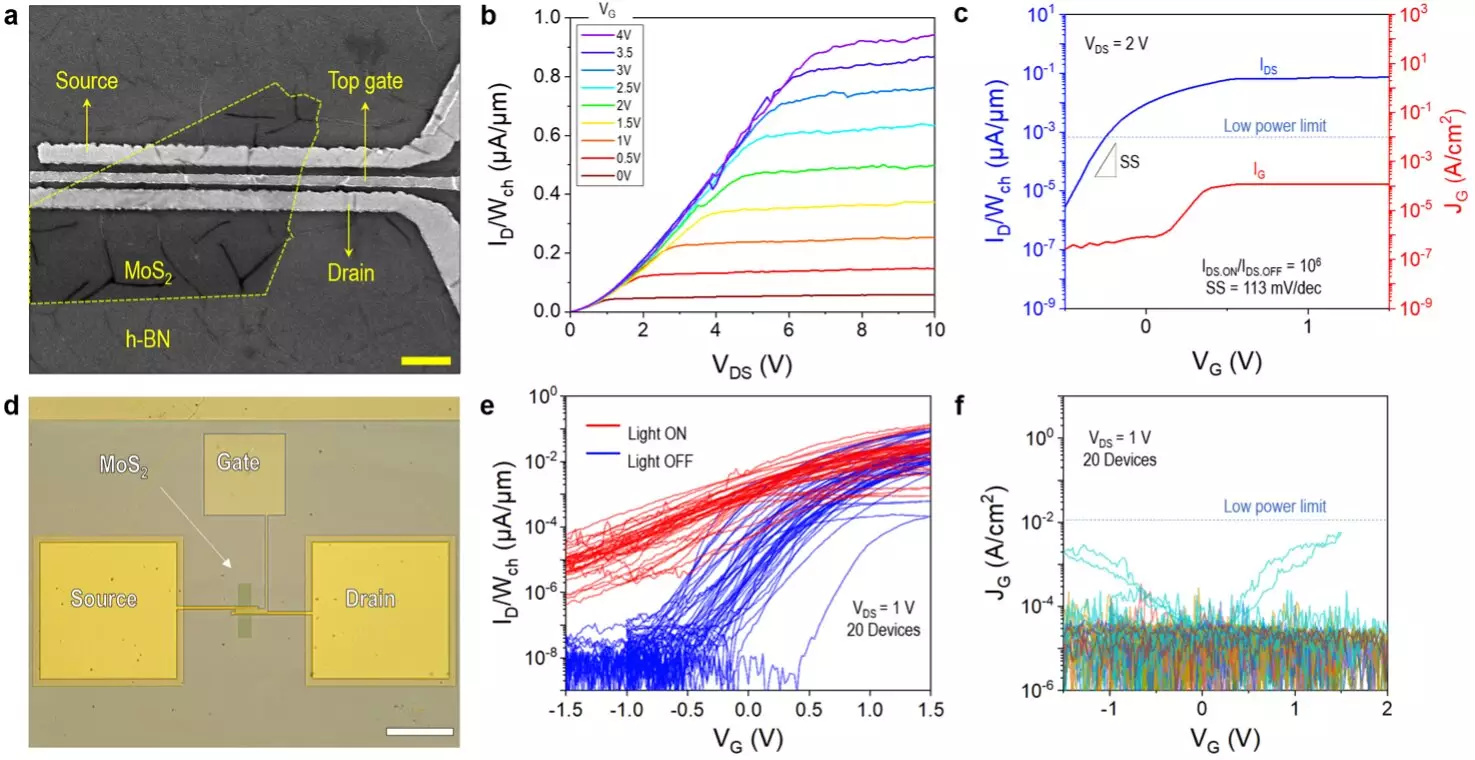Two-dimensional (2D) semiconducting materials have been a topic of interest in the field of optoelectronics due to their unique properties that make them ideal for use in ultra-thin and tunable electronic components. These materials have shown potential advantages over bulk semiconductors, but there have been challenges in effectively interfacing them with gate dielectrics.
The performance of transistors based on 2D semiconductors has been hindered by the presence of interfacial traps that degrade their functionality rapidly. Researchers at King Abdullah University of Science and Technology (KAUST), Soochow University, and other institutions globally have been working on addressing this challenge.
In a recent paper published in Nature Electronics, researchers introduced a novel approach that could improve the performance of transistors based on 2D semiconductors. The key aspect of their design involved the use of hexagonal boron nitride (h-BN) dielectrics and metal gate electrodes with high cohesive energy.
The team found that utilizing platinum (Pt) as an anode with h-BN stacks decreased the likelihood of dielectric breakdown. Subsequent experiments revealed that Pt/h-BN gate stacks exhibited significantly lower leakage current compared to gold (Au)/h-BN gate stacks and had a high dielectric strength of at least 25 MV/cm. This led to the idea of using chemical vapor deposited h-BN as a gate dielectric in 2D transistors.
The researchers fabricated over 1,000 devices using chemical vapor deposited h-BN as dielectrics. The fabrication process involved cleaning a SiO2/Si substrate, patterning source and drain electrodes with Ti/Au, transferring MoS2 as the channel, and depositing CVD h-BN film. The Pt gate electrode was patterned using electron beam lithography and deposited using e-beam evaporation.
The clean van der Waals interface between MoS2 and h-BN in the team’s transistor improved reliability and performance by minimizing defects and enhancing gate control. Contrary to previous beliefs, the researchers demonstrated that selecting the right metal electrodes, such as Pt and tungsten (W), enabled the effective use of CVD h-BN as a gate dielectric in 2D transistors.
The research team’s approach showed promising results, reducing leakage currents and achieving a high dielectric strength of at least 25 MV cm-1. The use of Pt and W-based gate electrodes significantly decreased leakage current across h-BN dielectrics compared to Au electrodes. This breakthrough could pave the way for the development of reliable solid-state microelectronic circuits and devices using 2D materials.
The implementation of hexagonal boron nitride (h-BN) in 2D semiconductor transistors represents a significant advancement in the field of optoelectronics. The findings of this research have opened up new possibilities for utilizing 2D materials in the fabrication of highly performing electronic devices. As further research is conducted in this area, we can expect to see even more innovations and advancements in the development of 2D semiconductor-based technologies.


Leave a Reply